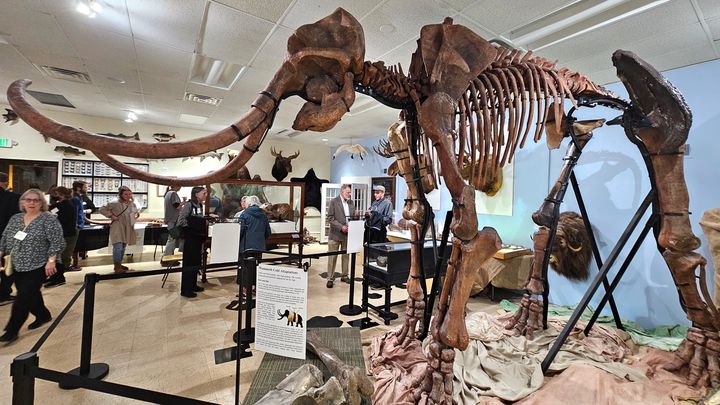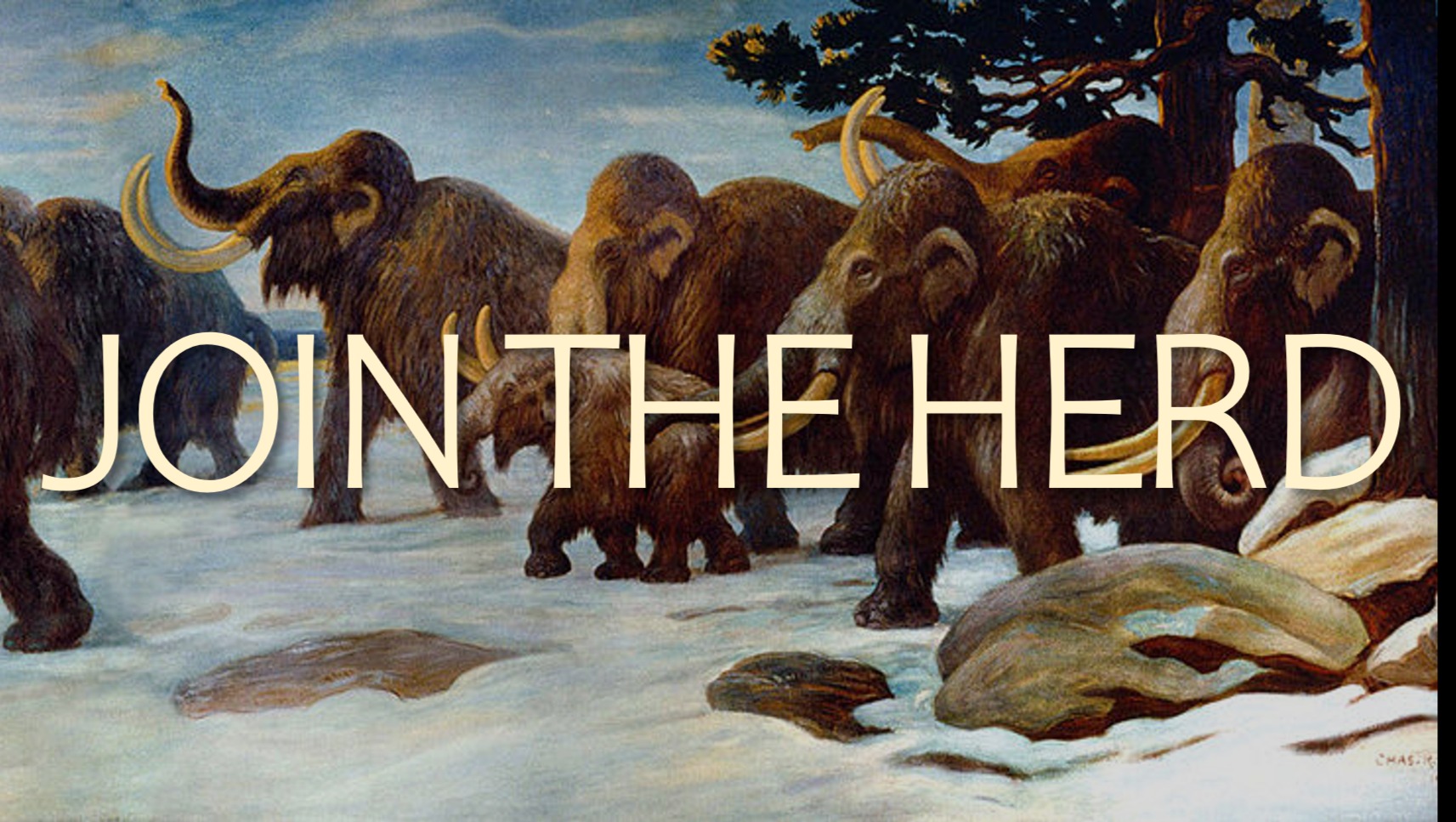
Help Bring The Mammoth Back to Maryland
Tax deductible
The first Woolly Mammoth ever exhibited in Maryland is here... and there is still work to be done!
Thanks to the generous support of donors like you, the Natural History Society of Maryland has completed the first phase of the Ice Age exhibit featuring the Woolly Mammoth. Our exhibit is open to the public every Wednesday from 2:00pm to 6:00pm, every Thursday from 10:00am to 2:00pm, and the FIRST SUNDAY of each month from 10:00am to 2:00pm. We can't wait to share it with you.
Because this is a developing exhibit, there is still work to be done and you can still make a difference by donating today!
WHY WE STILL NEED YOU: We strongly encourage you to visit the current phase of the exhibit, which focuses on the mammoth itself, its anatomy, its life cycle, its environment, and other mammals that were its contemporaries during the Ice Age. But work on the exhibit is far from finished.
- We will mount more bones. At the time of our exhibit opening, 24% of the actual fossil bones were mounted on to the supporting armature, with the rest being cast replica bones. It is very common for museums to display skeletons that are partially (or completely!) cast replica bones in order to educate visitors about extinct animals. However, we have so many more bones! We will be continuing to mount real bones onto the armature as the exhibit progresses. Your ongoing support will help make this happen.
- We will be rotating new artifacts and specimens in to the exhibit to tell even more stories about the Ice Age. More detail on these exciting next phases of the exhibit will be coming soon. Your ongoing support will help make these next phases happen.
ABOUT THE EXHIBIT: During the last Ice Age (115,000 to 11,700 years ago), the life and landscape of Maryland were vastly different. It was colder. There was no Chesapeake Bay. Mammoths, sabertoothed cats, bison, and great beavers roamed a land dominated by coniferous woods and marshy tundra. Our exhibit and educational programming take visitors on a journey back in time to see, learn about, and experience Maryland in the Ice Age.
ABOUT THE MAMMOTH: Many mammoths displayed in Europe and America are excavated through mining and other ecologically impactful processes. As part of an alternative, ecologically friendly approach, most of NHSM's mammoth was obtained in Alaska in partnership with local Native Alaskan communities following natural erosion. Throughout this project we have focused on avoiding the use of fossil fuels and heavy machinery.
ABOUT THE COLLECTOR: This history-making mammoth skeleton is on loan to the Natural History Society by Dr. Charles Breeze. Dr. Breeze is a research scientist whose work focuses on epigenetics, genomic diversity, and mammalian evolution.
ABOUT US: The Natural History Society of Maryland is a nonprofit organization dedicated to conserving Maryland’s natural heritage and educating its citizens on the natural sciences since 1929. NSHM aims to build a community where everyone feels welcome, where everyone has the opportunity to learn about the natural world, and where everyone can grow to their full potential as naturalists and stewards of our fragile planet.

Organizer
The Natural History Society of Maryland
Beneficiary